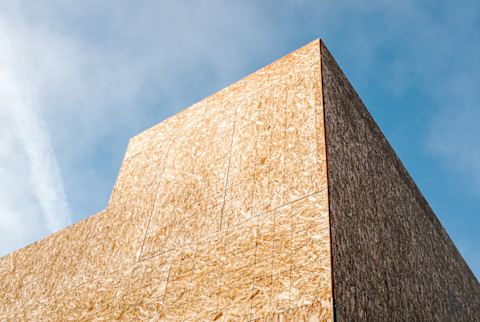This Carbon-Absorbing Wood May Be The Future Of Cutting Emissions

Carbon emissions are one of the major problems facing the climate crisis. And while there have been many efforts made to decrease emissions, it sometimes feels like there isn't much we can do about the carbon in the atmosphere already.
But a group of researchers from Yale University and the Potsdam Institute for Climate Impact Research have a theory that may help reduce emissions and do something about the carbon in our atmosphere already. Their recent paper suggests that the use of wood-based materials in urban construction could help cut the levels of carbon in the atmosphere by millions of tons1.
How can building with wood decrease carbon in the atmosphere?
The paper, published in Nature Sustainability says that the use of engineered timber, rather than carbon-intensive materials, in building midlevel structures can help cut carbon in more ways than one.
The use of these materials, according to the researchers, could create what they call a "carbon bank." With this, 10 to 68 million tons of carbon that might otherwise be released into the atmosphere annually could become stored. The materials used in construction are also associated with high emissions, and by swapping in engineered wood, the emissions produced in the first place would also be cut.
"Since the beginning of the Industrial Revolution, we have been releasing into the atmosphere all of this carbon that had been stored in forests and in the ground," said Galina Churkina, Ph.D., who led the collaborative research. "We wanted to show that there can be a vision for returning much of this carbon back into the land."
According to a 2018 report in Scientific American, "Just 100 cities account for 20% of humanity's overall carbon footprint." The potential to invert some of those areas to carbon sinks, rather than carbon sources, could have a dramatic impact on global carbon emissions.
"The city would become a carbon sink rather than a carbon source," said Alan Organschi, MArch, another author, from the Yale School of Architecture. "We would essentially be storing the carbon that would otherwise be combusted for energy or aerobically digested on the forest floor and allowing the forest to 'continue' in this restorative, carbon-absorbing system."
How can we apply this theory in real life?
But how do we actually accomplish these plans? While wood may seem like the building material of eras gone by, the technology around "timber" has improved dramatically since the age of building with trunks and branches.
"Using timber as the main building material for inner cities may seem counterintuitive, but novel technologies combined with an overwhelming climate benefit make it something every city planner should consider," said Barbara Reck, Ph.D., a senior research scientist and industrial ecologist at Yale.
Successful implementation would also require systematic changes, like changes to building codes and retraining construction workers, and more functional reforestation efforts. Because of this, it would also require changes to urban planning efforts. Further research and theorizing would therefore be needed to find a way to effectively use this knowledge.
"It raises the question: Why would we do this?" said Organschi. And the answer is, well, if we do it right—and that's a big if—the sheer capacity of buildings to work as climate mitigation tools is amazing. It's amazing."
